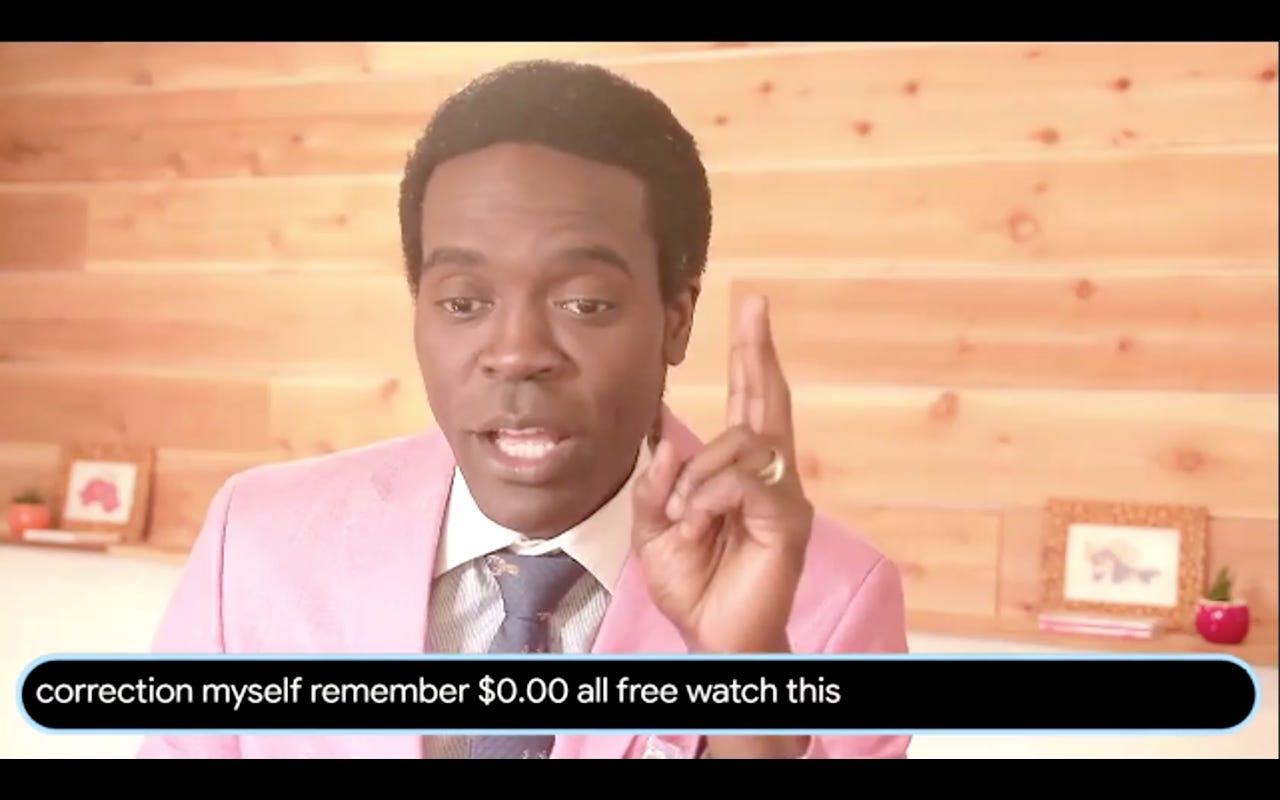What Canadian broadcasters can learn from esports producers
A video games prof shares how the journalism industry can modernize broadcasting practices by taking a page from esports production.
Hey y’all! Anita here. After a brief hiatus, I’m again sharing insights from the rockstar guest speakers who spoke to my Journalism Innovation class at Ryerson University in April. For my third and final newsletter on these takeaways, I’ll be exploring how gaming and virtual reality can be used in a journalistic context 🎮
My insider’s approach
First up is Kris Alexander, a video games prof and award-winning gamer — he was globally ranked 17th in Street Fighter 3: Third Strike Online Edition — at Ryerson’s RTA School of Media. I first met Kris while interviewing him for a report on how COVID-19 has impacted Canadians’ media-consumption habits, and was immediately taken by his infectiously enthusiastic personality and dynamic speaking style.
So, I asked Kris to share his thoughts on the different ways gaming and storytelling can intersect in the future. One noteworthy insight he had was that Canada’s journalism industry can modernize and democratize broadcasting practices by taking a page from esports production.
Kris specifically mentions OBS (Open Broadcaster Software), a free and open source software for video recording and live streaming that's frequently used for esports. OBS enables people to use their cell phone as a web camera, and to stream to Twitch, YouTube and other providers. He says the software is so sophisticated that users can colour-correct their images to make them as professional-looking as an in-studio 6 o’clock newscast at absolutely no cost.
Here’s the final colour-corrected image with two filters:
Here’s the colour-corrected image with only one filter:
Here’s the image with no colour correction:
Next up is Adrian Ma, another fellow prof at Ryerson’s School of Journalism where we first met. In addition to specializing in 360 and VR storytelling, Adrian is a published author, having written 2010’s How the Chinese Created Canada. He and I are also collaborating on a documentary about the historical impact of Chinese-Canadians in this country.
Adrian shared the various ways virtual reality (VR), augmented reality (AR), mixed reality (MR) and 360 video can be used in journalism, including these two highlights:
Dramatic reconstruction: This involves finding ways to take archival material and reconstruct it in a way that feels immersive, especially when you don’t have access to footage from a particular era or experience.
Emotional engagement: VR storytelling evokes emotional responses in users by bridging the connection between users and characters by helping users empathize with the characters’ suffering (though there are skeptics who disagree on how effective VR is in engendering true empathy).
The New York Times’ “The Displaced”
Emblematic Group’s “One Dark Night”
My outsider’s approach
After working for nearly two years as a full-time consultant, I often get people approaching me for advice on how to make the transition to consulting. To date, I’ve invited anyone who inquires to schedule a meeting with me so I can give them an overview of how to get started.
Lately, these requests have been coming in more frequently, so I’m planning to offer The Other Wave courses on consulting and other areas of my expertise. They’ll be a perk for my paying subscribers, but will also be available to the broader public for a fee (with discounts provided for those who can’t afford to pay full price).
Here are some other practical, how-to courses I’m thinking of offering:
Audience engagement and how it generates consumer revenue, with a special focus on BIPOC and other underrepresented communities
Objectivity vs. transparency: Applying ethical frameworks in journalism
Introducing community-driven journalism models to your newsroom
How to track and combat misinformation/disinformation
How to create a community advisory board for your newsroom
Business-model fundamentals in media
Cross-generational management: How to lead millennials and gen Zs
Change leadership and management for the modern workplace
How to organize online and get attention for your cause
Tell me: What other courses would you like me to offer? Take a look at my areas of expertise, and let me know in the comments or via email.
Shout-outs
Thanks a million to Paul Dore, my dear friend who recently featured The Other Wave in his newsletter for curious creatives, called The Dream Room. Subscribe to his monthly missives to get original fiction stories, enlightening cultural discussions and more.
Speakers’ corner
Rachel Chen, audience strategist at Indiegraf Media, sent me an insightful note about her thoughts on the term “BIPOC” in response to my last newsletter:
I've been thinking about the BIPOC term lately! I've always hated the term POC because it just sounds like...well, the inverse [editor’s note: “coloured people”], which is bad. I also read Ruby Hamad's White Tears/Brown Scars recently, and she had a great part about not being white enough to be white but not being brown enough to be brown. That made me think because she basically captures how people who are Arab or West Asian often have confusion over whether they count as POC or not.
There are also a lot of books like Hamad's that have talked about how race is a social construct so the definition of who is racialized is constantly changing depending on what benefits white supremacy. In short, I think racialized people makes the most sense unless you're referring to a specific group — which might not even be "race"-based anyway (Black, Indigenous, East Asian, Muslim, etc.) — because the bottom line is those of us [who] are racialized have to think about our race, whereas whiteness means you don't. That makes being racialized our shared experience versus when we talk about, for example, Black and Indigenous communities specifically, which face tougher histories in North American contexts (as per what the BIPOC term was trying to get across).
That being said, BIPOC and POC [are] colloquial, so it's fine. I just don't love it! Thanks for letting us share our thoughts.
In my community
The Online News Association is hosting ONA Insights, a two-day conference for journalism leaders, in Philly this October. It’ll be the first in-person gathering for ONA, for which I serve as a board member, since 2019.
Huge congrats to Andrea Wenzel whose book, Community-Centered Journalism (which features some of the community journalism work I’ve done), was selected as a finalist for the AEJMC's 2021 James Tankard Book Award!
Earlier this week, The Walrus published this analysis that’s been gestating in my brain for the better part of two years. In it, I argue that for too long, Canadians have taken their cues from Americans on how to talk about racism, which leaves us ill-equipped to confront racial inequity here.
Cool stuff I like
My neighbours and I just finished reading Norma Dunning’s Tainna: The Unseen Ones for our book club focused on Indigenous authors. My fiancé and I took turns reading this captivating book of short stories to each other by a campfire.
Check out this enlightening but anger-inducing edition of No Mercy / No Malice, a weekly column by New York University business professor Scott Galloway. It dissects the “MeWork generation,” a new class of billionaires in America that still get handsomely rewarded despite losing investor money.
I highly recommend watching 1979’s Being There, a sharp but subtle satirical film starring Peter Sellers as Chance, a simpleton who effortlessly fails up after a wealthy couple mistakes him for being an upper-class businessman who’s fallen on hard times.
Last thought
At some point when you have proven yourself and fought your way into institutions that were not built for you, when you’ve proven you can compete and excel at the highest level, you have to decide that you are done forcing yourself in.
- Pulitzer-winning journalist Nikole Hannah-Jones on why she declined an offer of tenure from the University of North Carolina at Chapel Hill
How you can support The Other Wave
My professional mission has always been to support the global movement towards more thoughtful, impactful news coverage, and all the ways that manifests. If The Other Wave gets you to think even a little differently about journalism, especially in Canada, then I will have accomplished what I set out to do. And if TOW gets you to take action and support Canadian media outlets — especially ones that strive to be innovative and inclusive — I will have exceeded my expectations.
If my values and goals resonate with you, please consider supporting fiercely independent media analysis that fills in gaps in coverage of the Canadian journalism landscape. How? Feel free to provide feedback, pass along resources, donate money or simply share this newsletter with your friends.








Wow! Just wow! You're going to hate to hear this, Anita, but I'm beginning to understand why some of my readers ask me to make my blog posts shorter. There is just so much here that is obligatory reading. I am fascinated by gamification and how it will change the future of education . . . and journalism. I knew about the Winnipeg strike from Carol Bolt's play Buffalo Jump, but the 360-report was absorbing. Of course, I was aware of Sudan, Syria and Ukraine, but the NYT doc , The Displaced, is an acute reminder that it's always children who pay the greatest price for a war. Having gone through the tenure and full-professor process, I read Nikole Hannah-Jones' open letter with particular interest. The process is a minefield. She has shown that the deeper you go into the power structure the more conservative and reactionary it becomes. Sometimes you need to break things to figure out how they work.
I don't know where else to complain . . . but why isn't How the Chinese Created Canada available in Kindle format?
http://www.thesourgrapevine.com/2019/11/when-it-comes-to-china-do-canadians.html?m=0